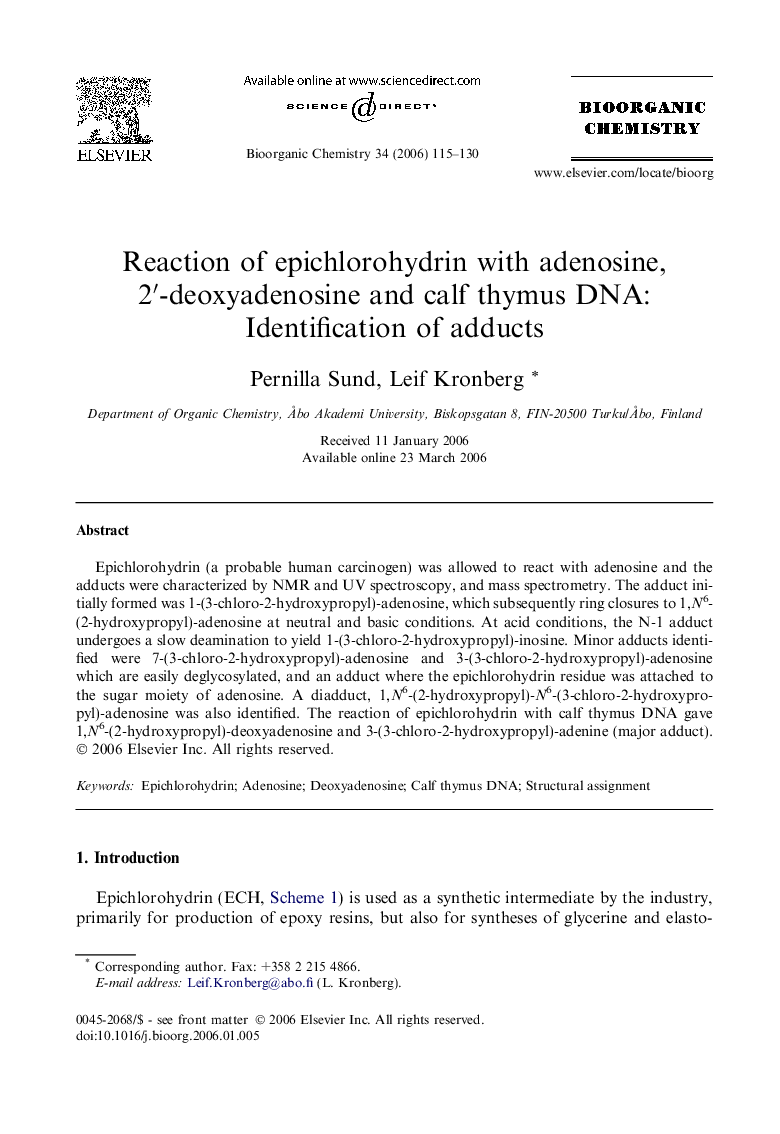| Article ID | Journal | Published Year | Pages | File Type |
|---|---|---|---|---|
| 1356368 | Bioorganic Chemistry | 2006 | 16 Pages |
Abstract
Epichlorohydrin (a probable human carcinogen) was allowed to react with adenosine and the adducts were characterized by NMR and UV spectroscopy, and mass spectrometry. The adduct initially formed was 1-(3-chloro-2-hydroxypropyl)-adenosine, which subsequently ring closures to 1,N6-(2-hydroxypropyl)-adenosine at neutral and basic conditions. At acid conditions, the N-1 adduct undergoes a slow deamination to yield 1-(3-chloro-2-hydroxypropyl)-inosine. Minor adducts identified were 7-(3-chloro-2-hydroxypropyl)-adenosine and 3-(3-chloro-2-hydroxypropyl)-adenosine which are easily deglycosylated, and an adduct where the epichlorohydrin residue was attached to the sugar moiety of adenosine. A diadduct, 1,N6-(2-hydroxypropyl)-N6-(3-chloro-2-hydroxypropyl)-adenosine was also identified. The reaction of epichlorohydrin with calf thymus DNA gave 1,N6-(2-hydroxypropyl)-deoxyadenosine and 3-(3-chloro-2-hydroxypropyl)-adenine (major adduct).
Related Topics
Physical Sciences and Engineering
Chemistry
Organic Chemistry
Authors
Pernilla Sund, Leif Kronberg,
